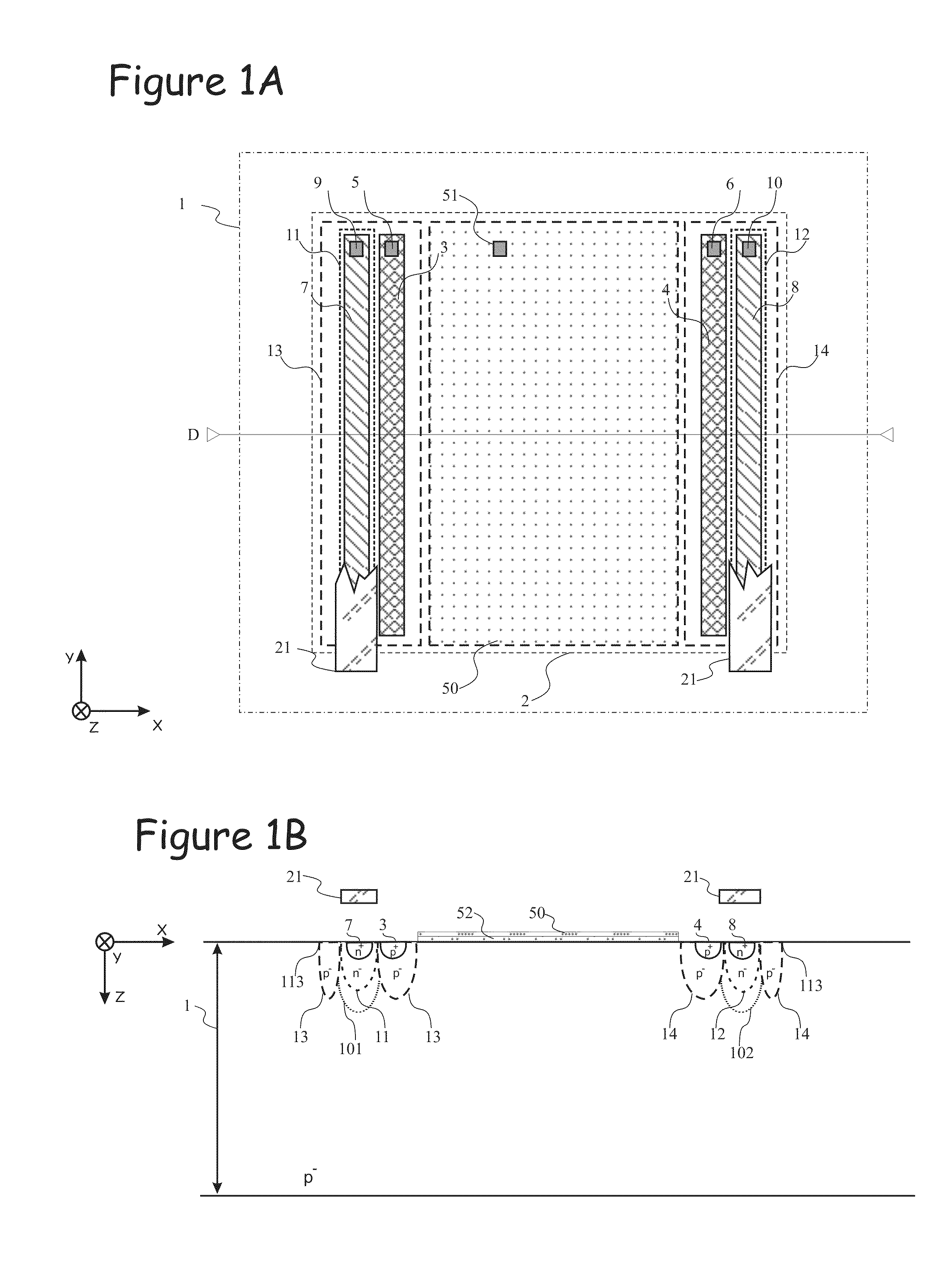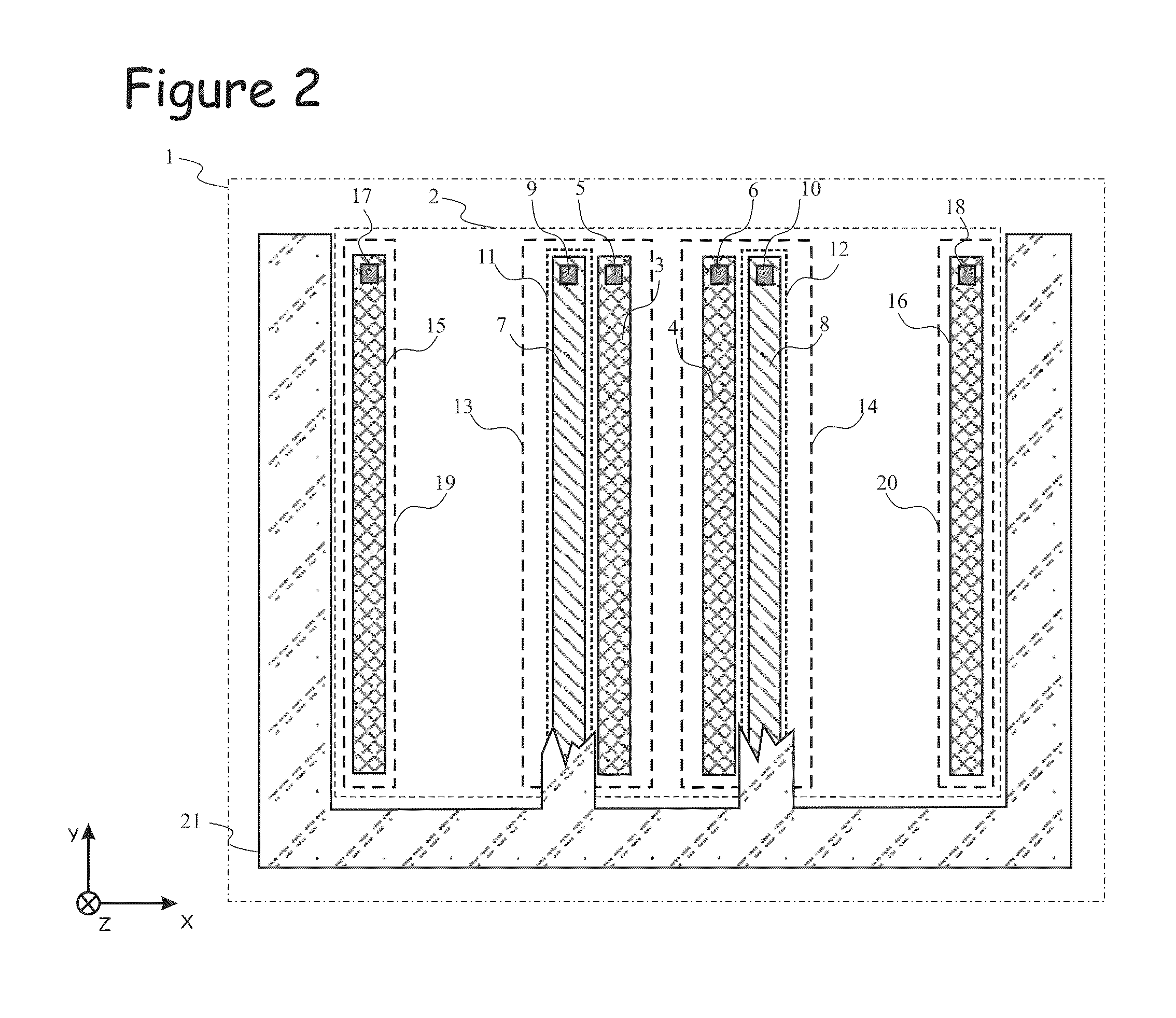Photonic mixer and use thereof
a photonic mixer and mixer technology, applied in the field of photonic mixers, can solve the problems of limiting effects, affecting the diffusion of minority charge carriers, increasing modulation frequency, etc., and achieve the effects of reducing measurement time, reducing the size of the photonic mixer, and increasing resolution
- Summary
- Abstract
- Description
- Claims
- Application Information
AI Technical Summary
Benefits of technology
Problems solved by technology
Method used
Image
Examples
first embodiment
[0046]The top view of FIG. 1A shows the layout of this The field shaping zones 13, 14 are at opposite edges of the field area 2, at which electromagnetic radiation will impinge the substrate so as to be converted into minority and majority carriers. The detector regions 7,8 and the contact regions 3,4 are elongate regions extending parallel to each other and are provided with terminals 9,10 and 5,6 respectively. These terminals 9, 10, 5, 6 are in this example limited to areas at an end of the regions 7, 8, 3, 4 but they not need to be located exactly there. There can be multiple terminals on the same contact region. Masks 21 overlie the detector regions 7,8 in order to shield those from incoming electromagnetic radiation.
second embodiment
[0047]FIG. 2 is a diagrammatical top view of the invention. Whereas in FIG. 1A, two pairs of a detector region and a contact region are defined at extremes of the field area 2, this embodiment comprises four contact regions 3, 4, 15, 16 and merely two detector regions 7,8. The additional contact regions 15,16 are located at extreme edges of the field area 2. Field shaping zones 19, 20 are defined below the additional contact regions 15, 16 and terminals 17, 18 are defined thereon. The additional contact regions 15,16 are designed to be put on a constant voltage during the photonic mixing operation. The contact regions 3,4 are intended to be put on alternating voltages. Therewith, one may apply a field with both a AC component and a DC component. The application of such field is found to limit crosstalk.
[0048]It is an option of the present embodiment to leave out one of the detector regions 7,8. That is beneficial so as to reduce detector area for smaller devices. This option is not ...
PUM
 Login to View More
Login to View More Abstract
Description
Claims
Application Information
 Login to View More
Login to View More - R&D
- Intellectual Property
- Life Sciences
- Materials
- Tech Scout
- Unparalleled Data Quality
- Higher Quality Content
- 60% Fewer Hallucinations
Browse by: Latest US Patents, China's latest patents, Technical Efficacy Thesaurus, Application Domain, Technology Topic, Popular Technical Reports.
© 2025 PatSnap. All rights reserved.Legal|Privacy policy|Modern Slavery Act Transparency Statement|Sitemap|About US| Contact US: help@patsnap.com



